Here are some of our plants bees use in each season:
- Spring
- Summer woodies
- Summer herbaceous plants
- Fall (this page) and especially goldenrods
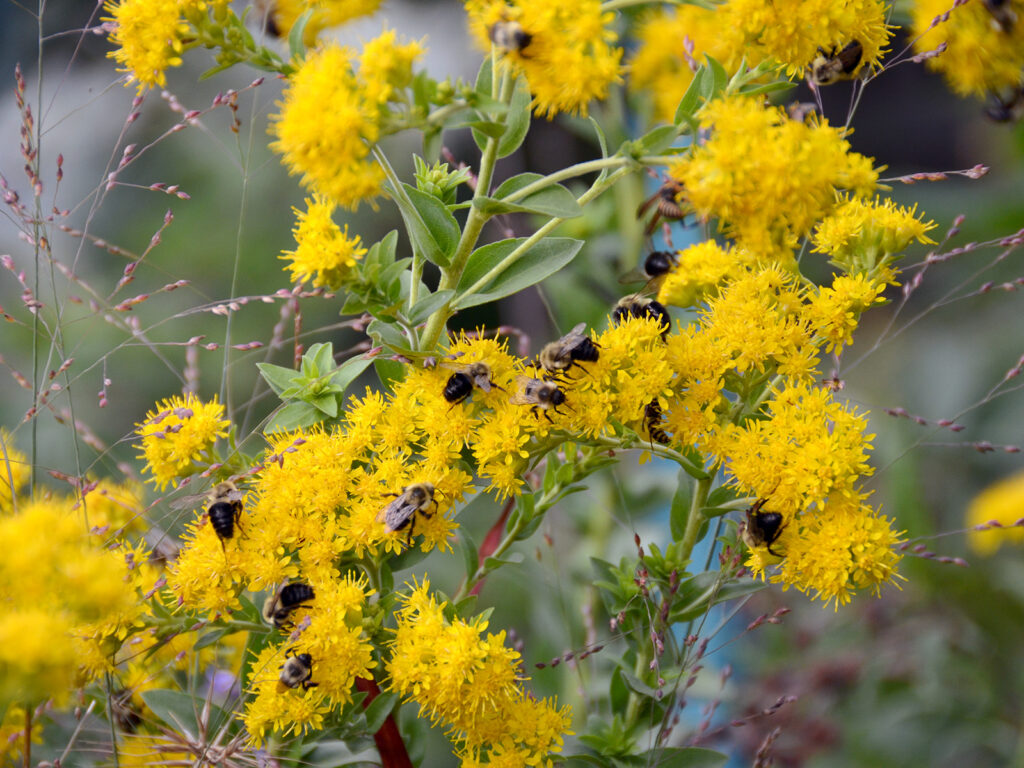
I’m not sure whether bees need pollen in the fall since they have finished laying eggs, but they certainly like (and need) nectar for energy.
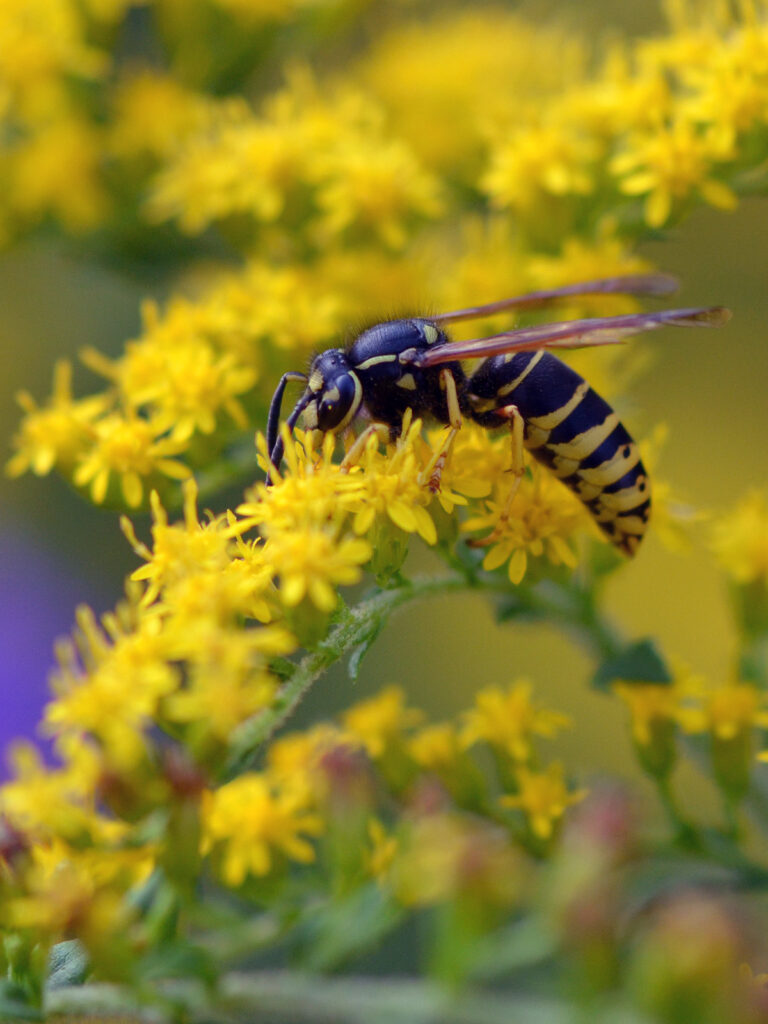
Wasps (an insect, though not a bee) are part of a healthy ecosystem, too. This wasp is getting nectar from a cultivar of rough-stemmed goldenrod (Solidago rugosa).
Here’s more about that fall powerhouse, goldenrod.
(HINT: It’s NOT the source of allergies as it’s often made out to be!)
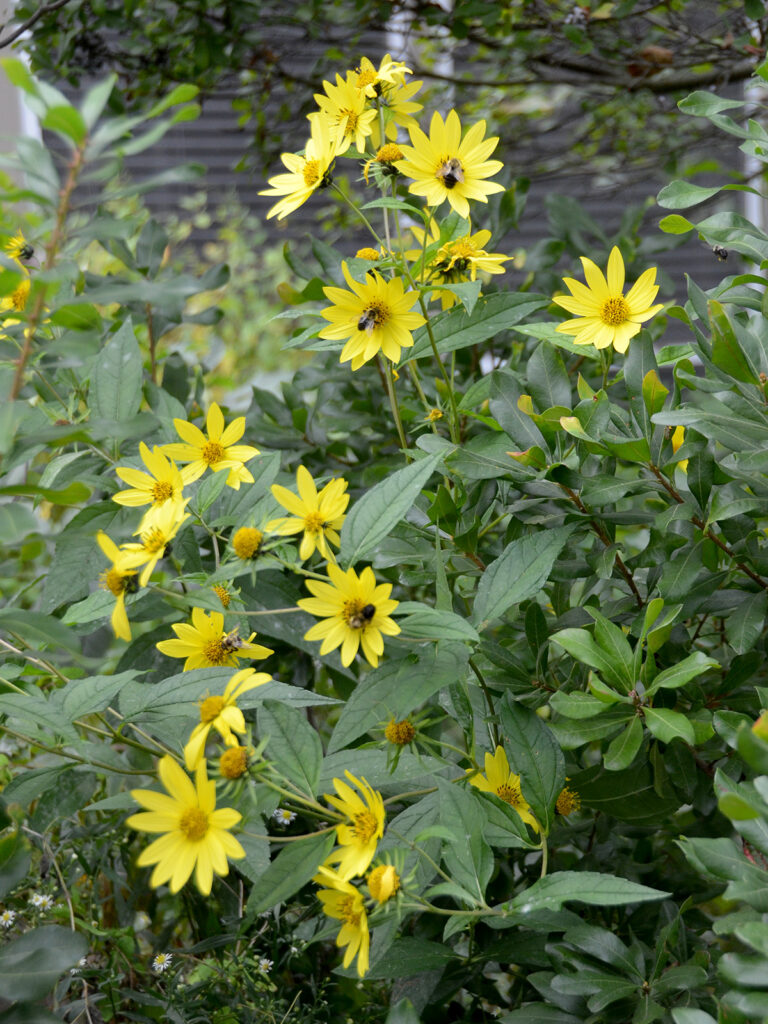
Woodland sunflower (Helianthus divaricatus) is a beautiful plant with lots of nectar.
It’s fairly tall and it can spread a bit, so it’s important to find a place where that won’t be a problem. It adds a lot of sunshine to a lightly shaded spot.
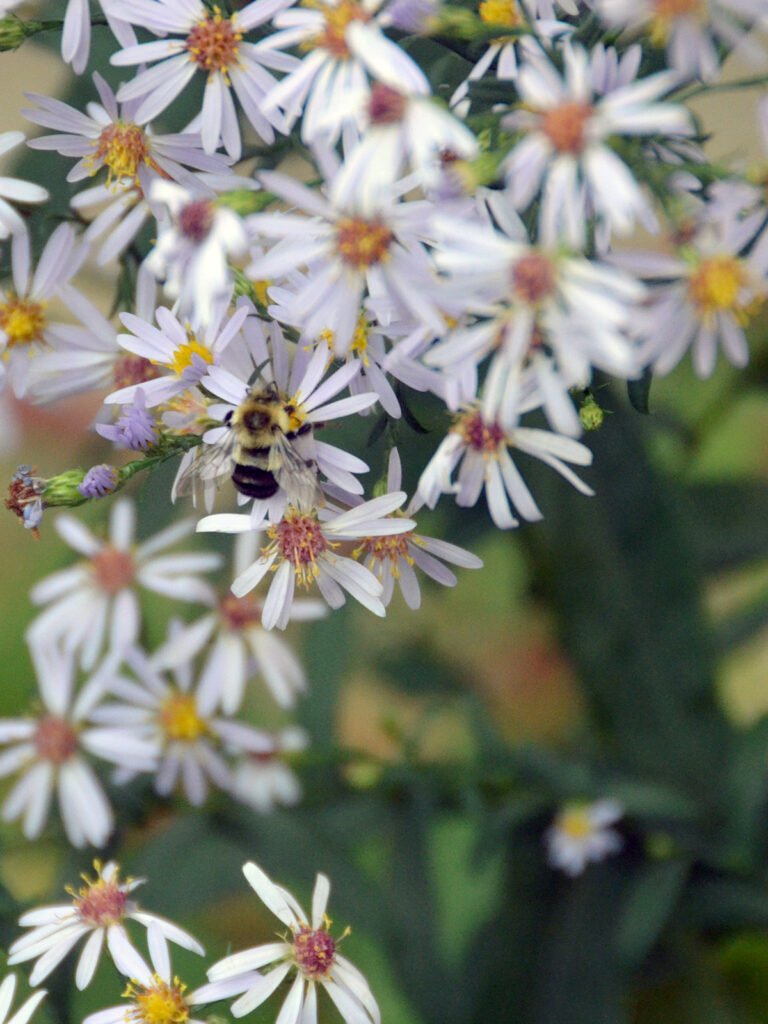
We have a variety of asters, and I’ve lost track of which is which. I do know that they’re native varieties (or at least 95% of them).
And I do know that they’re a favorite of bees, especially since there’s not much else around in late fall except for goldenrods.
(And a highway of asters and goldenrods is also an important source of nectar in the fall powering the monarchs’ long journey to Mexico.)
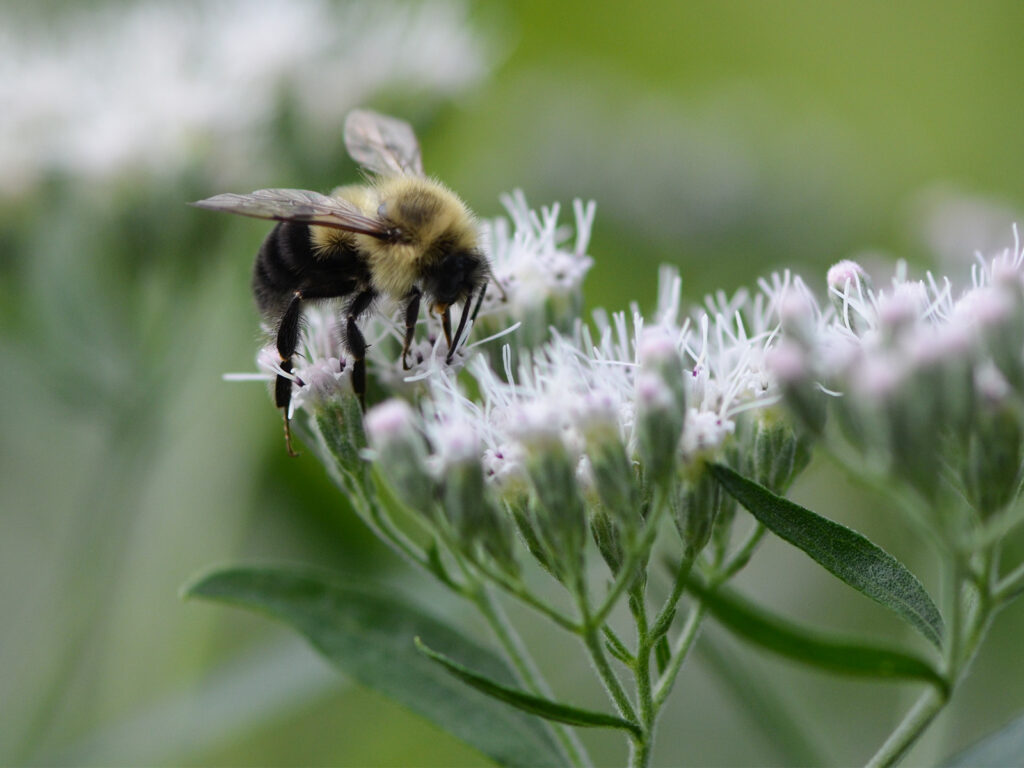
I got this late boneset plant (Eupatorium serotinum) from the edge of a gas station parking lot, and it took me a while to figure out what it was. Bees know, though, that it’s full of nectar.
Resources
More information about goldenrods, including the myth that goldenrod is the source of allergies.
Reflections
Humankind needs to act quickly to ensure that the ancient pact between flowers and pollinators stays intact, to safeguard our food supply and to protect our environment for generations to come.
~ , Scientific American, April 2009
Man is more dependent on these wild pollinators than he usually realizes …Without insect pollination, most of the soil-holding and soil-enriching plants of uncultivated areas would die out, and with far reaching consequences to the ecology of the whole region. Many herbs, shrubs, and trees of forests and range depend on native insects for their reproduction; without these plants many wild animals and range stock would find little food. Now clean cultivation and the chemical destruction of hedgerows and weeds are eliminating the last sanctuaries of these pollinating insects and breaking the threads that bind life to life.
~ , Silent Spring, 1962
